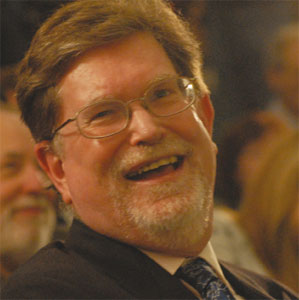The Nobel Prize in Physics 2006 recognizes research that studies the young universe, before the first stars were born and before galaxies began to form. John Mather of the NASA Goddard Space Flight Center (GSFC) and George Smoot of the Lawrence Berkeley National Laboratory share the prize “for their discovery of the blackbody form and anisotropy of the cosmic microwave background (CMB) radiation”. Both physicists’ work involved the Cosmic Background Explorer (COBE) satellite, which in the early 1990s provided an exciting new view of CMB radiation. This carries the imprint of the universe as it was some 300,000 years after the Big Bang, when radiation and matter decoupled and atoms began to form. COBE’s findings strongly supported the Big Bang and began to turn cosmology into a precise observational science.

Mather and Smoot share a long-standing interest in cosmology. For Smoot this followed a PhD in 1970 in particle physics, and he soon concentrated on producing experimental data about the early universe – in particular to study the CMB, the discovery of which by Arno Penzias and Robert Wilson in 1964 had, in Steven Weinberg’s words, shown that there was such a thing as an early universe to study. (Penzias and Wilson went on to share the Nobel prize in 1978.) By 1974, Smoot had submitted a proposal to NASA to measure and map the CMB in search of imprints of what had happened at earlier epochs.
At the same time, Mather, with an interest in infrared astronomy, led efforts for the first proposal for COBE. After moving to the GSFC, he became study scientist (1976) and then project scientist (1988) for COBE, as well as principal investigator for the Far Infrared Absolute Spectrophotometer (FIRAS) on board COBE. Smoot, meanwhile, became principal investigator of COBE’s Differential Microwave Radiometer (DMR).
The original plan was for a space shuttle to launch COBE, but shuttle operations came to a standstill in 1986 after Challenger‘s horrific accident. However, Mather and his collaborators negotiated the use of a rocket and launched the satellite in November 1989. The FIRAS, designed to measure the CMB radiation spectrum with unprecedented precision, soon revealed a blackbody spectrum perfect to within 50 ppm, corresponding to 2.725±0.002 K, formidable evidence for the Big Bang.

More slowly, Smoot and his colleagues analysed the DMR measurements to create maps of the sky that revealed tiny temperature variations (about 10 ppm) in the generally uniform radiation. These indicated density variations in the primordial universe, which would eventually lead to regions of galaxies and clusters of galaxies separated by empty space. The data proved invaluable in constraining models of the early universe.
A thousand physicists, engineers and others involved in the project both before and after the satellite’s launch contributed to COBE’s success. The satellite took data until the end of 1993, and in 2003 its successor, the Wilkinson Microwave Anisotropy Probe, provided an even more detailed look, measuring temperature fluctuations to millionths of a degree.







